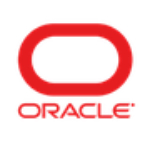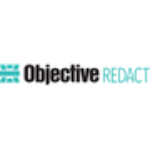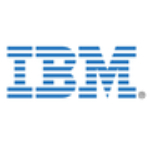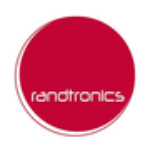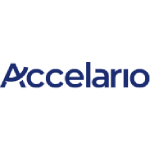List of Best Data Masking Software
Showing 10 of 14 productsOracle Data Masking and Subsetting a powerful tool that allows businesses to protect sensitive data while still maintaining its usefulness. With advanced masking and subsetting techniques, Oracle helps companies comply with privacy regulations and mi...Read Oracle Data Masking and Subsetting Reviews
Informatica Persistent Data Masking is a software solution designed to safeguard sensitive data by obfuscating it in databases, files, and applications. It ensures data privacy and security while maintaining the integrity of the original data. With i...Read Informatica Persistent Data Masking Reviews
IRI FieldShield is a data masking software that ensures the security and privacy of your sensitive information. Empower your organization to stay compliant with regulatory standards and protect your data from potential breaches. With IRI FieldShield,...Read IRI FieldShield Reviews
Objective Redact is a software that ensures complete confidentiality and security of sensitive information. With advanced features and user-friendly interface, it simplifies the process of redaction and helps businesses protect their data with ease...Read Objective Redact Reviews
Imperva Data Masking is a data protection solution for your business. With advanced masking techniques and robust security measures, it ensures the safe handling of sensitive information while maintaining data usability. Dont let data breaches jeopar...Read Imperva Data Masking Reviews
IBM Security Guardium is a data protection and compliance solution designed to safeguard valuable information and sensitive data from potential threats. With advanced technology and robust features, this software offers a robust defense against cyber...Read IBM Security Guardium Reviews
Randtronics DPM easyData the innovative data protection and management software designed to streamline your organizations data operations. With its user-friendly interface and robust features, DPM easyData ensures secure is a management of your valua...Read Randtronics DPM easyData Reviews
TrueVault is a secure data storage platform built specifically for sensitive personal and medical information. With state-of-the-art encryption and strict privacy controls, TrueVault ensures that your data remains protected and compliant with HIPAA r...Read TrueVault Reviews
Accelario is a data management solution designed to streamline your data processes and optimize your overall business performance. With its innovative technology features, Accelario is the perfect tool for businesses looking to enhance their data man...Read Accelario Reviews
Immuta is a highly advanced software that revolutionizes data management and governance. With its innovative approach, Immuta offers cutting-edge solutions to the ever-growing challenges of data privacy and security. Its user-friendly interface and p...Read Immuta Reviews
- What Is Data Masking Software?
- Top Reasons Why Businesses Need Data Masking Software?
- What Are the Top Key Features of Data Masking Software?
- What Are the Top Benefits of Data Masking Software?
- What Are the Steps to Choose the Right Data Masking Software?
- What Are the Types of Data Masking Software for Different Industries?
- What Are the Technology Trends for Best Data Masking Software?
- What Are the Deployment Options for Data Masking Software?
What Is Data Masking Software?
Data masking software is a software application that has been specifically developed to safeguard sensitive data by rendering it indecipherable. The functioning of this system involves the replacement of sensitive information stored in a database with simulated data that closely resembles the original but is entirely fictional.
This poses a significant challenge or renders it infeasible for an unauthorized individual to decipher or gain entry to confidential information. The data is commonly denoted as "masked" or "anonymized" data. The best data masking software enables the provision of selective data access to authorized users, hence ensuring the preservation of data confidentiality and security.
The utilization of the top data masking tools serves the purpose of safeguarding sensitive and confidential data, while simultaneously enabling authorized access to this data during the stages of development and testing. Data masking is employed as a means of safeguarding data from potential misuse or unauthorized access, such as malicious exploitation or hacking attempts.
Database masking tools are an effective mechanism utilized by enterprises seeking to safeguard critical and sensitive information. The utilization of this technology extends to cloud computing, database management systems, and web server applications.
The implementation of data masking solutions enables businesses to mitigate the risk of a data breach and uphold the integrity and confidentiality of their information.
Top Reasons Why Businesses Need Data Masking Software?
1. Data masking software is utilized to mitigate the risk of both inadvertent and deliberate unauthorized access to sensitive data.
2. The utilization of this technology has the potential to safeguard sensitive personal data, including health and financial information.
3. The utilization of this approach enables enterprises to conduct testing on applications and systems without the need for employing sensitive production data.
4. The utilization of database masking tools allows firms to effectively adhere to legal requirements, such as the General Data Protection Regulation (GDPR) and the California Consumer Privacy Act (CCPA).
5. The utilization of this technology can aid in the detection and mitigation of internal malevolent actions.
6. Data masking solutions are designed to enhance the security of data by impeding unauthorized access from potential attackers.
7. The utilization of this technology enables the generation of anonymised datasets that can be employed for research purposes and analytical endeavors.
8. The top data masking tools enhance system performance by minimizing the volume of data that necessitates storage and management.
9. The utilization of this tool enables the generation of simulated data within testing and development environments.
10. This technology enables enterprises to effectively and compliantly share data both within their internal networks and with external stakeholders.
11. The best data masking software streamlines the data migration procedure across diverse data sources.
12. The enhancement of data security is achieved by the implementation of measures that impede the ability of unauthenticated users to decipher the underlying significance of the data.
13. The implementation of this measure mitigates the potential for identity theft and fraudulent activities by obfuscating personally identifiable information.
14. The top data masking tools are utilized by enterprises to ensure compliance with legal and industry norms.
15. The implementation of database masking tools enhances the protection of client data privacy and security through the concealment of important information.
What Are the Top Key Features of Data Masking Software?
Data masking software possesses several essential functions.
1. Data Encryption: Data masking software provides a safe means of storing and encrypting sensitive data to ensure its confidentiality during transmission.
2. Masking: The top data masking tool is a technique that enables users to alter sensitive data in a manner that ensures secure sharing, while simultaneously maintaining the precision and integrity of the original information.
3. Anonymization: The best data masking software is a security measure that is implemented to restrict access to sensitive information solely to individuals who possess the necessary authorization. Additionally, it has the capability to carry out anonymization processes in order to prevent the identification of data subjects.
4. Format Preserving: The process of data masking solutions allows users to create a clone of the original data structure while maintaining the relative worth and significance of the information.
5. Compliance: The data masking tools is a technique that aids users in adhering to data protection requirements by effectively restricting unwanted access to sensitive and confidential data.
6. Auditing: The utilization of data masking enables users to conduct audits on data in order to ensure the accuracy and compliance of the masked data.
7. Access Controls: The best data masking software is a mechanism that implements access controls to guarantee that only individuals with proper authorization are granted access to the data.
8. Dynamic Data Generation: The utilization of database masking tools allows users to generate test data that closely resembles real-world data, hence facilitating its usage for testing objectives.
9. Monitoring: The top data masking tools offers a mechanism for continuous monitoring, enabling timely notifications to users in the event of unauthorized access attempts.
10. Automation: The technique of data masking can be automated to efficiently and expeditiously mask substantial quantities of data.
What Are the Top Benefits of Data Masking Software?
1. Improved Data Security: Data masking software is designed to obfuscate critical data, rendering it illegible to unauthorized individuals, hence mitigating the potential for data breaches and cyber-attacks.
2. Enhanced Privacy: The implementation of data masking solutions serves as a safeguard for an organization's sensitive personal data, preventing unauthorized access and ensuring data privacy.
3. Improved Compliance: The capacity to conceal personal and sensitive information assists organizations in adhering to industry standards, such as the General Data Protection Regulation (GDPR).
4. Enhanced Product Development: The utilization of data masking software aids in the facilitation of precise product testing before its distribution.
5. Improved Support: The utilization of the best data masking software allows customer support and IT teams to securely access production data while ensuring the protection of individual users' privacy.
6. Cost Savings: The data masking tools can assist organizations in minimizing their data storage expenses by decreasing the volume of data present within a system.
What Are the Steps to Choose the Right Data Masking Software?
1. Identify what type of data requires masking: Prior to the selection of a data masking program, it is imperative to ascertain the specific nature of the data that need masking. Are you seeking to conceal databases, files, or applications? The initial stage in choosing an appropriate data masking solution involves comprehending the specific data protection needs.
2. Determine the type of data masking techniques required: Various data masking strategies exist, which can be employed depending on the specific type of data that requires masking. Database masking solutions have the ability to employ several approaches, including scrambling, tokenization, encryption, and nulling.
3. Research the available data masking software: After gaining a comprehensive understanding of the various data masking approaches necessary for safeguarding data, the next step is conducting research on the existing the best data masking software that is already available. It is imperative to thoroughly evaluate the characteristics of each solution and ascertain the most suitable option for fulfilling one's specific data masking requirements.
4. Evaluate data masking software: It is advisable to do an evaluation of each data masking solution after conducting thorough research on various options. This will enable you to ascertain which masking program possesses the qualities that most aptly align with your requirements for safeguarding data. Additionally, it is vital to guarantee that the masking software possesses user-friendly features and aligns with the financial constraints of your firm.
5. Test the data masking software: It is advisable to do an evaluation of each data masking solution after conducting thorough research on various options. This will enable you to ascertain which masking program possesses the qualities that most aptly align with your requirements for safeguarding data. Additionally, it is vital to guarantee that the masking software possesses user-friendly features and aligns with the financial constraints of your firm.
What Are the Types of Data Masking Software for Different Industries?
The utilization of data masking software is prevalent across various industries as a means of obfuscating sensitive and secret data. Various forms of data masking can be implemented to safeguard data from unwanted access, depending on the specific demands of the sector.
There are various categories of database masking tools that cater to the specific requirements of different sectors.
1) Tokenization: The process of tokenization involves substituting sensitive data with an encrypted identifier that bears resemblance to the original material. This is particularly advantageous in situations when the data must be preserved in its functional state. In the field of banking and finance, tokenization serves the purpose of safeguarding the personal data of individual customers, while simultaneously facilitating precise and efficient processing of applications.
2) Redaction: Redaction is a technique employed in data masking when specific elements of the data are eliminated, resulting in the data becoming incomprehensible. Data masking is frequently employed in the healthcare and legal sectors to safeguard sensitive patient data and confidential legal papers, respectively.
3) Watermarking: Watermarking is a technique employed in data security to enhance the safeguarding of data by incorporating an additional layer of protection.
The primary purpose of utilizing this technique is to incorporate a discernible or imperceptible identifier into the data, which serves to distinguish it as belonging exclusively to the person who initiated the request or to the user's affiliated institution. Data masking is a commonly employed technique within the manufacturing sector.
4) Encryption: Encryption is a widely employed method for obfuscating data. The process entails the transformation of data into an unintelligible format, rendering it inaccessible to anybody without proper authorization.
Data masking is a commonly employed technique within the information technology (IT) sector to safeguard data stored in cloud environments or shared networks.
5) Pseudonymization: Pseudonymization refers to a technique employed in data masking, wherein sensitive data is substituted with non-identifying information, typically in the form of a randomly created pseudonym.
The practice of safeguarding the privacy of persons who have been exposed in the media sector is frequently employed, with the aim of facilitating comprehensive data aggregation.
In conclusion, a diverse range of data masking tools exists, each designed to cater to the unique requirements of various businesses. The selection of data masking techniques is contingent upon the desired level of security and the sensitivity of the data in question.
What Are the Technology Trends for Best Data Masking Software?
1. Automation for faster deployment - Automated data masking solutions are increasingly being adopted as standard practice in both enterprise and mid-market environments. The capacity to efficiently implement the product with minimal interference to operations has the potential to yield significant time and cost savings.
2. Ability to handle structured or unstructured data - With the growing diversity of data sources in terms of format, kind, and size, it is imperative for a data masking solution to possess the capacity to effectively manage and process various forms of data. The ability to effectively conceal data entails the capacity to handle both structured and unstructured data.
3. Intelligent algorithms - Sophisticated algorithms are employed by advanced data masking software to effectively substitute, replace, and rearrange data in order to maximize its level of anonymity.
The utilization of intelligent algorithms enables the best data masking software to consider the contextual aspects of data, hence enhancing the precision of the data masking procedure.
4. Smart masking - The utilization of intelligent masking capabilities facilitates a heightened level of flexibility and adaptability within the masking procedure.
This practice is particularly advantageous in instances where it becomes imperative to guarantee adherence to certain standards, such as the Payment Card Industry Data Security Standard (PCI DSS), which mandates the implementation of safeguards for protecting sensitive information.
Smart masking technologies provide a variety of masking approaches and automated workflow features in order to mitigate complexity.
5. Adaptability to different use cases - The adaptability of data masking is crucial in accommodating diverse use cases, ranging from conventional software programs to advanced analytics and reporting tools.
An effective the best data masking software should possess the capability to obfuscate data based on a user's specific requirements, irrespective of the application or platform being utilized.
6. Cloud-first approach - There is a growing trend among businesses to adopt cloud technology as a means to achieve financial efficiencies and enhance scalability. Cloud-based data masking solutions enable users to efficiently and effectively transfer, obfuscate, and modify substantial volumes of data, beyond the capabilities of on-premise applications.
What Are the Deployment Options for Data Masking Software?
The deployment of data masking software can vary based on the specific technology being utilized.
1. Server-based deployments have historically been the prevailing choice, although their prevalence has diminished in recent times due to the rise of cloud-based alternatives.
The implementation of this deployment necessitates the installation and configuration of the best data masking software on a tangible server, whereby the software application afterwards functions directly on said server.
2. The adoption of cloud-based deployment is on the rise, mostly driven by the inherent scalability offered by cloud services. Data masking software can be conveniently accessed via cloud service providers such as Amazon Web Services or Microsoft Azure, obviating the necessity for physical server configuration and maintenance.
In addition to the flexibility and simplicity inherent in a cloud-based platform, this particular deployment method also presents the benefits of reduced time-to-value and decreased maintenance expenses.
3. Software-as-a-service (SaaS) deployment is a widely favored alternative, ultimately. Software-as-a-Service (SaaS) platforms are a highly advantageous option for enterprises seeking an effective and adaptable solution to address their data masking requirements.
Software as a Service (SaaS) installations commonly provide a straightforward and intuitive user interface, necessitating only minimal effort for setup and configuration.
